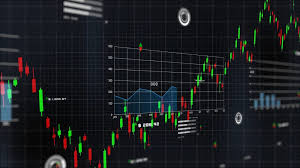Understanding Crypto Trading Charts A Comprehensive Guide

Understanding Crypto Trading Charts: A Comprehensive Guide
In the rapidly evolving world of cryptocurrency, traders rely heavily on Crypto Trading Charts click here to make informed decisions. Trading charts serve as a vital tool, providing insights into market behavior and assisting traders in predicting future movements. This article aims to explain the fundamental aspects of crypto trading charts, their types, components, and the tools that can enhance your trading experience.
What are Crypto Trading Charts?
Crypto trading charts are visual representations of a cryptocurrency’s price over time. These charts is vital for both new and experienced traders as they showcase price movements, trading volume, and market sentiment. By analyzing these charts, traders can identify trends, support, and resistance levels, ultimately helping them make strategic trading decisions.
The Importance of Crypto Trading Charts
Trading charts are crucial for a number of reasons. First, they reveal historical price patterns, which can indicate future movements. Observing past price action allows traders to assess potential entry and exit points. Second, charts facilitate real-time analysis, enabling traders to react quickly to market changes. Finally, they help in understanding market psychology by reflecting the actions of all market participants.
Types of Crypto Trading Charts
There are several types of trading charts commonly used in the crypto space. Each type has its unique characteristics and suits different trading styles.
1. Line Charts
Line charts are the simplest form, showcasing the closing prices over time. They provide a clear picture of the overall price movement, making them ideal for beginners who want to grasp the basics of price direction.
2. Bar Charts
Bar charts present more information compared to line charts. Each bar represents a specific time frame, showing the opening, closing, highest, and lowest prices. These charts help traders understand price volatility and are beneficial for those looking to identify short-term trading opportunities.
3. Candlestick Charts
Candlestick charts are among the most popular types used by traders. Each “candlestick” represents price action for a specific period and displays the open, high, low, and close prices. Candlestick patterns provide valuable insights into market sentiment, allowing traders to spot potential reversals or continuations in trends.

4. Area Charts
Area charts are similar to line charts but fill the area beneath the line. They provide a visual representation of price movements, helping traders identify trends while emphasizing the magnitude of price changes over time.
Key Components of Crypto Trading Charts
Understanding the key components of crypto trading charts is essential for effective analysis. Here are some core elements to consider:
1. Time Frames
Time frames dictate the duration over which price movements are analyzed. Traders can choose various time frames, from minutes to days or even weeks, based on their trading strategy. Short-term traders may focus on minute and hour charts, while long-term investors often analyze daily or weekly charts.
2. Price Axes
The vertical axis represents the price scale, while the horizontal axis shows time. Understanding these axes allows traders to interpret price movements accurately and identify critical levels of support and resistance.
3. Volume Indicators
Volume is a crucial aspect of trading charts as it indicates the level of activity and interest in a specific cryptocurrency. High volume during a price increase suggests strong buying interest, while high volume during a price decrease may indicate significant selling pressure. Volume indicators can help confirm trends and signal potential reversals.
How to Read Crypto Trading Charts
Learning how to read crypto trading charts is essential for making informed trading decisions. Here are some tips to get started:
1. Identify Trends
Trends are classified as upward (bullish), downward (bearish), or sideways (consolidation). Recognizing the prevailing trend can guide traders in making decisions that align with market sentiment.
2. Support and Resistance Levels

Support and resistance levels are price points where the market tends to reverse. Support is where buying interest is strong enough to prevent the price from falling further, while resistance is where selling pressure prevents the price from rising. Identifying these levels can help traders set entry and exit points effectively.
3. Chart Patterns
Chart patterns such as head and shoulders, triangles, and flags signal potential reversals or continuations in trends. Familiarizing yourself with these patterns can enhance your ability to anticipate price movements.
4. Use of Technical Indicators
Technical indicators such as moving averages, Relative Strength Index (RSI), and Bollinger Bands can provide additional insights into market conditions. Incorporating these tools into your analysis can improve the accuracy of your trading decisions.
Common Mistakes in Crypto Trading Charts
Even experienced traders can make mistakes when interpreting crypto trading charts. Here are some common pitfalls to avoid:
1. Overcomplicating Charts
While it’s tempting to use numerous indicators and tools, an overly complicated chart can lead to confusion. It’s essential to simplify your charts to focus on key signals and avoid information overload.
2. Ignoring Volume
Volume is a critical aspect of price movements. Traders who neglect volume analysis may miss key insights regarding market sentiment and potential trend reversals.
3. Failing to Set Stop Losses
Risk management is crucial in trading. Failing to set stop losses can lead to significant losses. Always implement risk management strategies to protect your investments.
Conclusion
Crypto trading charts are indispensable tools for anyone looking to navigate the dynamic world of cryptocurrency trading. By understanding the various types of charts, their components, and how to read them effectively, traders can make informed decisions that align with market trends. Whether you’re a novice trader or a seasoned professional, mastering the art of analyzing crypto trading charts will undoubtedly enhance your trading experience. Remember, practice and continuous learning are essential to success in the ever-evolving crypto market.
For those eager to delve deeper into the world of crypto trading, exploring online resources, courses, and trading communities can provide valuable insights and knowledge.

